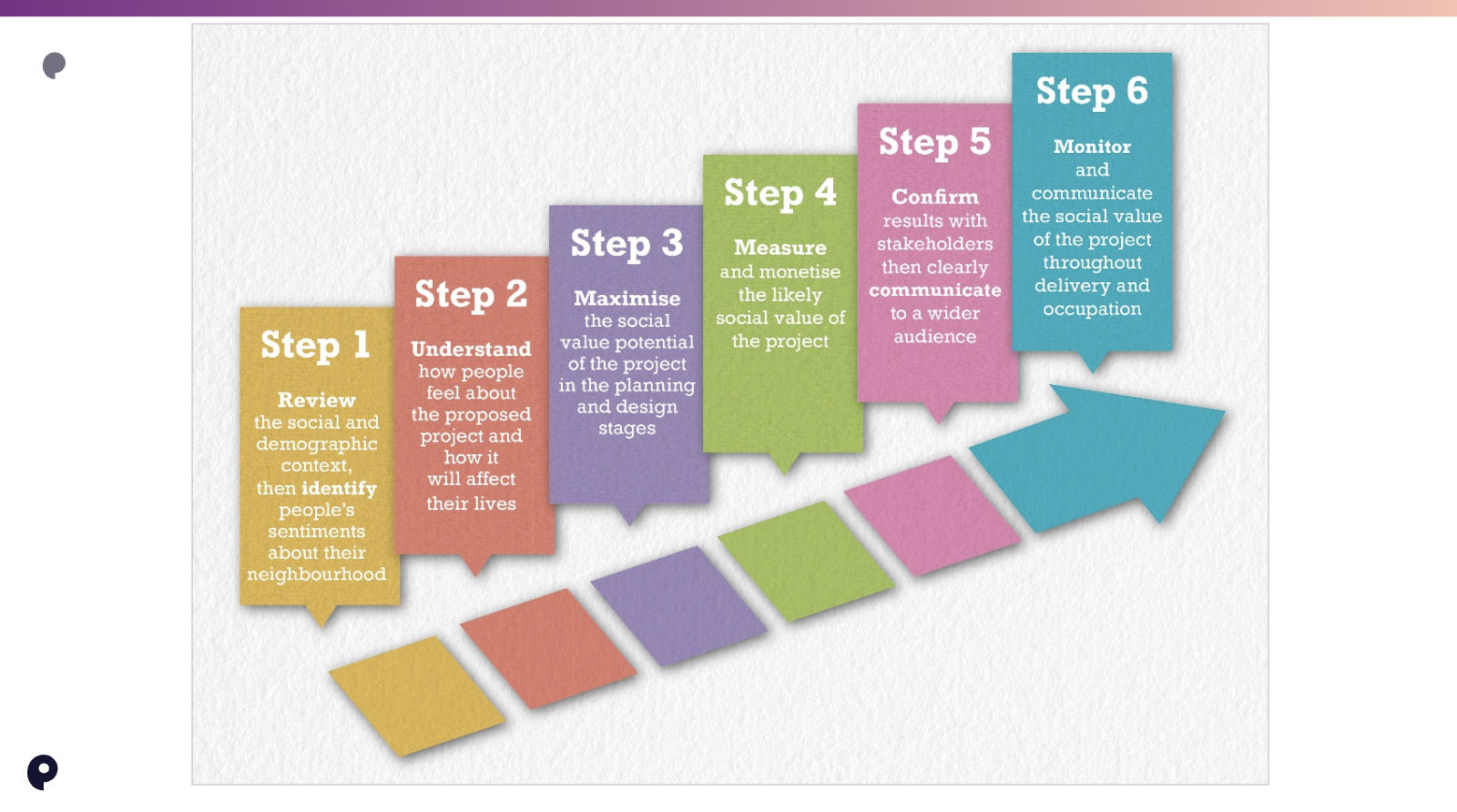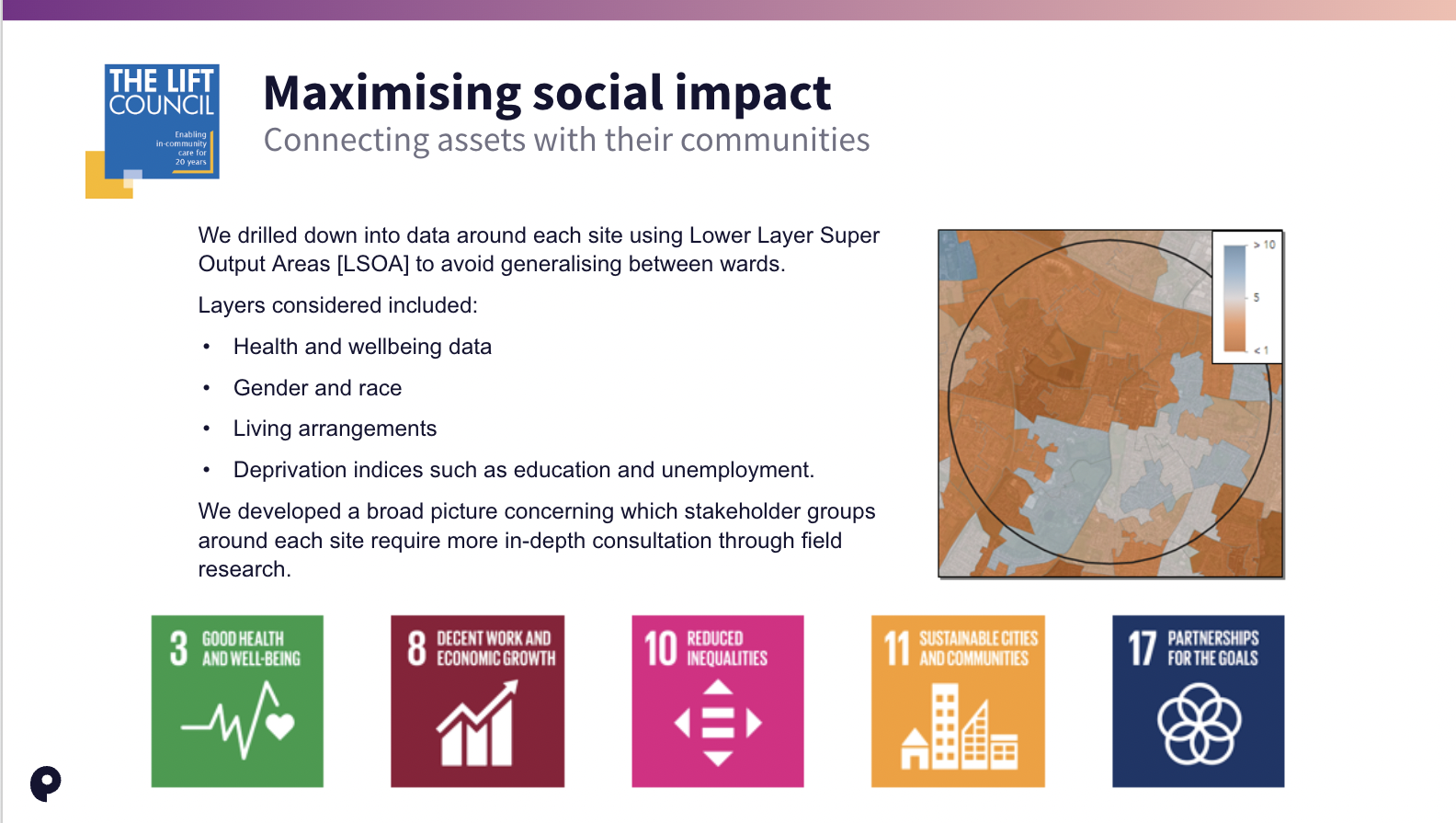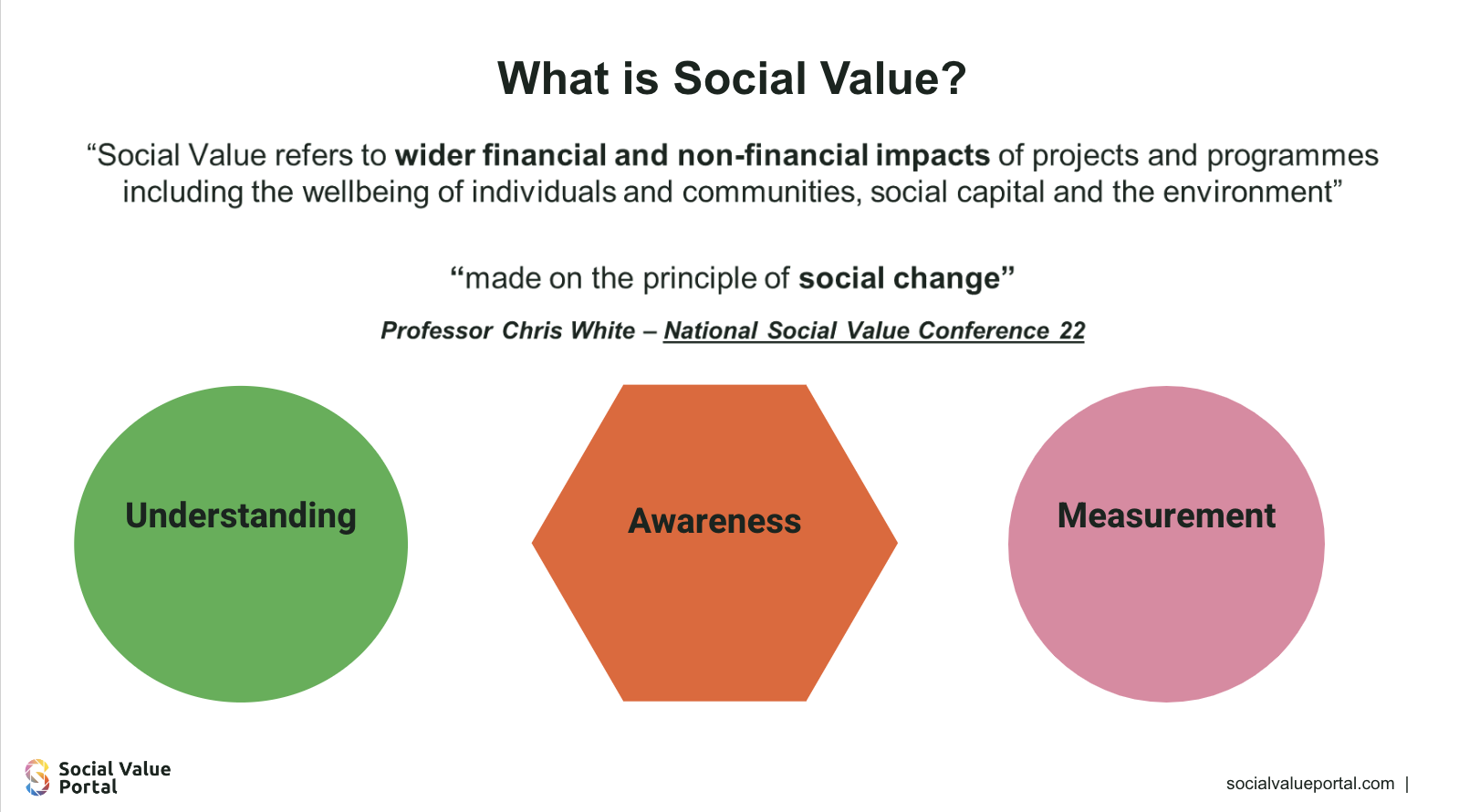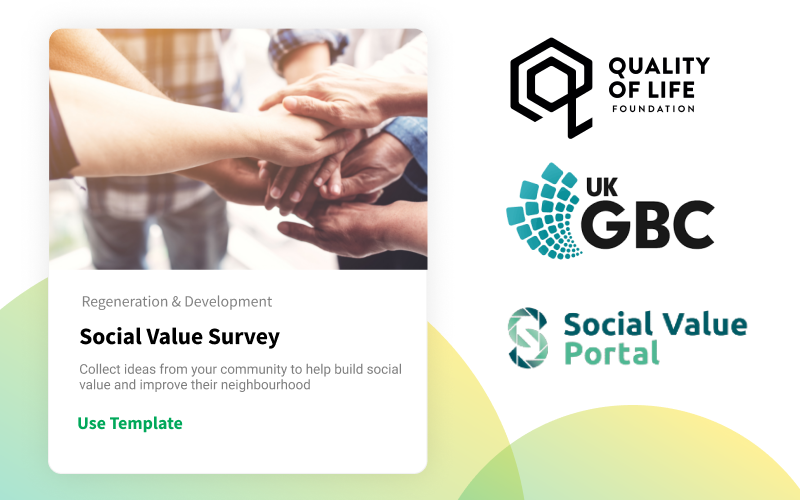Webinar: Driving sustainable growth through ESG standards

By Charlotte Cooper | 07/07/22 11:24
6 min read
Missed out on our webinar: Driving sustainable growth through ESG standards, Social value and community engagement? Fret not! Discover what all our expert panellists had to say about the best way to achieve ESG and Social Value goals in our handy webinar summary.
Or you can watch the whole thing for yourself. Access the free recording below.
Environmental, social and governance (ESG) considerations have been recognised by government and funders as a central factor in successful developments. The social impact of development and who has a say in shaping localities are increasingly important to the private sector.
In order to ensure sustainable economic growth in today’s built environment, development and social value go hand-in-hand. Now developers, real estate managers, housing associations and local authorities must work to create sustainable, successful places that promote environmental, physical, emotional and social wellbeing by understanding what people need from the places they live and work. Recently, we were joined by an expert panel to discuss this:
Rosa Bolger: Head of Public South @Commonplace
Olivia Sutcliffe - Senior Social Value Advisor - TOMs Specialist @Social Value Portal
Phil Higham - Founding Director @RealWorth
John Edwards - Senior Social Value Consultant @Costain Group PLC
Cleo Weeden: Head of Private @Commonplace
Here’s the rundown of their talking points…
Phil Higham: Let’s talk about the ‘S’ in ESG

From our experience as social value practitioners, the S (social) in ESG is tiny. There’s lots of great work being done by organisations in the built environment, whether they’re commissioners, developers or local authorities, on the E (environment) and the G (governance and reporting), but from our experience S is often a catch up area. We know that it needs a louder voice.
ESG is all about things that affect people. The key seven factors that we consider contribute to people’s social value are: Ecosystems, Crime, Health, Wellbeing, Education, Employment and Revenue. The question is, how does the built environment affect these factors and change people’s lives for the better?
At RealWorth, we like to keep our work with social value simple. It’s a six step process:
- Review: Find out what people want
- Understand: Use that information to develop proposals
- Maximise: Then use the information to also maximise the social impact
- Measure: Find out the likely social value of the project
- Confirm: Check the results with stakeholders and communicate the results widely
- Monitor: Continue to watch the social value of the project progress for at least five years
Most importantly, you must check that what you set out to do has actually happened. If it hasn’t then consider what has gone wrong and what you can do to fix it.
One question we’ve had is, ‘why bother doing this at all?’ To put it simply, creating designs for people and places without involving them is last century thinking. Doing social value planning properly results in better outcomes, better decisions, better returns and reduced risk. As human beings, we all know that it’s just the right thing to do. People deserve a say in the places they live and work and should have the opportunity to voice their opinions on what would improve their lives in those areas.
John Edwards: An example of ESG principles in action

I’ll run through one case study to highlight the importance of social value and ESG. To increase social impact, what we try and do is maximise co-design in each area by engaging in conversation with local stakeholders. Let’s see how the community research in this case study helped augment the social value and improve performance.
I’ll keep the client private, but they’re a finance partner to the NHS in a local improvement finance trust. The client on this project co-owns and manages fifty health and wellbeing centres across England. They have some exceptional reporting against UNSTG standards across their portfolio, but it’s a top down narrative with ESG. They asked us to give their stakeholders an authentic voice when delivering social value from each of their sites.
By doing proper research, we can make sure that social value at each site is maximised by adding support where it will be most valuable. This helps drive down social and health inequality in each area. It also increases utilisation at each site and adds value long-term.
This is as Phil mentioned before. If you get your social value right, you can improve on your returns and reduce risk.
How do we do it? Digital research first and foremost. We’ve got some pretty clever digital tools and what we’re able to do is drill down into local health and wellbeing data around each site. We also looked into other data like gender, race, deprivation, the loneliness layer etc. That allowed us to develop quite a broad picture around which stakeholder groups require a more in depth consultation. We’d then establish which activities would be of the greatest measurable social value. The differences can be vast even between different streets.
Having then identified broad categories of stakeholders we then needed to engage in field research to identify which challenges those groups face and what outcomes would have measurable impact. To do this, we recruited ambassadors in three main categories: NHS CCGs, local government and non-governmental organisations, community groups and third sector organisations. They could give us the best insight into the wants and wellbeing of community stakeholders. This gave us quite a well rounded view of each region.
The report that followed this research described the circumstances in which the groups of people in these sites live their lives. It gave recommendations for what activities would build community wealth around each asset and identified partners to maximise social impact.
Olivia Sutcliffe: What is social value?
 Let’s talk about what social value actually means. While it doesn’t have a concrete definition, it refers to the wider financial and non-financial impacts of projects and programmes including the wellbeing of individuals and communities, social capital and the environment.
Let’s talk about what social value actually means. While it doesn’t have a concrete definition, it refers to the wider financial and non-financial impacts of projects and programmes including the wellbeing of individuals and communities, social capital and the environment.
In April, we had the National Social Value Conference and our keynote speaker was the MP Professor Chris White who drove the Social Value Act through. In his speech, he said that it’s made on the principle of social change and that the three key underpinning factors of social value are: understanding, awareness and measurement. We’re ten years past the Social Value Act now, but we’ve had things such as the PPN 06/20 which is really important as it mandates central government in scope organisations to mandate 10% social value weighting by the social value model. That’s a big step forward and great to see. Followed by 05/21 and 06/21, we can see this movement further pushing social value and ESG principles into public sector work which naturally affects the private sector too.
One question I get a lot is, ‘what does good look like in terms of social value?’ The answer is that there isn’t just one perfect answer. It varies from project to project and industry to industry. However, there are some things you can do to make sure you are delivering good social value for your community.
- Understanding: If you are ever going to deliver true social value you need to understand the area you are working in. You can do this by undertaking local news analysis and by actively engaging with communities either on the ground or by using digital engagement platforms. This provides the community a voice.
- Awareness: This is done by creating social value action plans including timelines, partnerships and points of responsibility. You can use social media and digital platforms to raise awareness of social value activities within the communities.
- Measurement: Here you must select the most relevant social value measurement method. Make sure you’re only promising to deliver what’s actually feasible in your situation and following your evidence requirements as proof of your work.
Cleo Weeden: ESG, social value and Commonplace
 So where does Commonplace fit in this conversation? I think that we act as the conduit to the community so their voices can be heard. We’ve heard about how important it is to deal with stakeholder groups, but I think why running a digital engagement alongside some of the more traditional field research is so valuable for four key reasons.
So where does Commonplace fit in this conversation? I think that we act as the conduit to the community so their voices can be heard. We’ve heard about how important it is to deal with stakeholder groups, but I think why running a digital engagement alongside some of the more traditional field research is so valuable for four key reasons.
- Reaching a target audience: By using social media plus the existing stakeholder groups to find people, you’re encouraging a more diverse audience engaging with the process.
- Broadening your reach: By using a digital engagement tool you’re getting meaningful engagement and can use the data to understand exactly who the community are and can target your efforts in other areas if you see certain demographics missing.
- Gathering robust data: With our team of experts, you can get granular with your data and really get into the needs of these specific groups. By monitoring the changing trends, you can make decisions about your engagement quickly and close the loop when you need to. Unless you go back to the community with the choices you make, they won’t know what you’re doing and not understand the amount of work going into these projects.
- Getting the community invested: What excites me the most about digital engagement is being able to show the community how their feedback can shape plans.
Commonplace can easily sit alongside national social value frameworks and even create more tailored frameworks for the communities you’re working with. That conduit that we create through digital engagement then becomes very iterative.
As Phil mentioned, continuing to monitor for five years afterwards is so important as it’s by continuing to engage with the community that we can create positive outcomes where people see change as possible and that actions can be taken when needed. It creates a legacy for the organisation that ran the engagement and a good one at that.
That was the rundown of our webinar panellists! As always, you can rewatch the whole thing using the link below or sign up for our upcoming webinars here.
.png)
